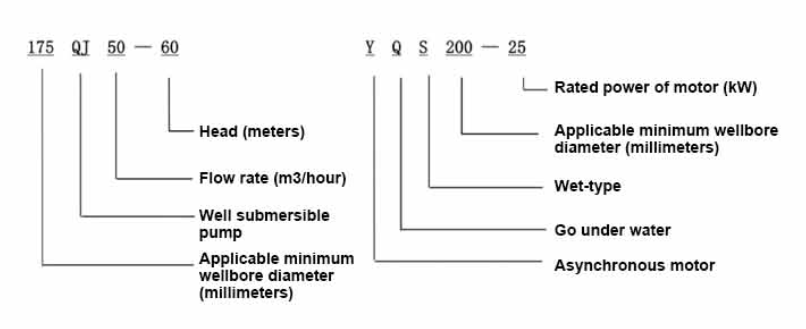Nov . 19, 2024 11:46 Back to list
submersible sump pump parts
Understanding Submersible Sump Pump Parts
Submersible sump pumps are vital devices used to remove water from areas that require drainage, such as basements, crawl spaces, or outdoor locations. These pumps operate underwater, making them efficient in preventing water accumulation and potential flooding. To understand how these pumps function effectively, it is essential to be familiar with their parts and components. In this article, we will explore the key parts of submersible sump pumps, their functions, and their importance in maintaining a dry environment.
1. Pump Housing
The pump housing is the outer shell that protects the internal components of the sump pump. Typically made from durable materials such as cast iron or thermoplastic, the housing is designed to withstand water exposure and prevent corrosion. It also provides a waterproof seal, ensuring the motor and electrical components remain safe from water ingress.
2. Motor
At the heart of a submersible sump pump is its motor. The motor powers the pump, enabling it to draw water in and push it out through the discharge pipe. Most submersible motors are enclosed, which helps prevent water damage. The motor's wattage and horsepower determine the pump's efficiency and ability to handle varying water levels.
3. Impeller
The impeller is a crucial component that facilitates the movement of water within the pump. When the motor spins the impeller, it creates a centrifugal force that draws water into the pump and pushes it up through the discharge pipe. Different types of impellers can be used depending on the pump’s design and intended application. The design of the impeller directly affects the pump’s flow rate and the height (head) it can lift the water.
4. Float Switch
A float switch is an essential component of submersible sump pumps, responsible for detecting the water level in the sump basin. It is typically a buoyant device connected to the motor via a mechanical or electronic switch. As the water level rises, the float also rises and eventually reaches a predetermined level that triggers the pump to start working. Once the water level drops, the float lowers and turns the pump off, preventing dry running. This automatic operation is crucial for maintaining consistent drainage without the need for manual intervention.
submersible sump pump parts

The discharge pipe is where the water exits the pump. It connects the pump to the drainage area or an external drainage system. Proper sizing and installation of the discharge pipe are critical to ensure optimal performance. If the pipe is too small or has too many bends, it can restrict water flow, reducing the pump's efficiency.
6. Check Valve
A check valve is typically installed in the discharge line to prevent the backflow of water into the sump basin when the pump is not operating. By ensuring that water only flows in one direction, the check valve helps maintain the pump’s efficiency and prolongs its lifespan by reducing the frequency of cycling.
7. Sump Basin
The sump basin, also referred to as the sump pit, is the structure that holds the submersible pump. It is usually made of plastic, fiberglass, or steel and is installed below ground level to collect groundwater, rainwater, and other excess water. The size and depth of the basin are crucial for accommodating the pump and for providing sufficient space for water accumulation.
8. Power Cord and Plug
Finally, the power cord and plug are essential for powering the submersible pump. The cord is typically waterproof to prevent damage from water exposure. Proper cord length ensures the pump can reach the nearest power outlet safely.
Conclusion
Understanding the components of submersible sump pumps is crucial for homeowners looking to prevent water accumulation and protect their properties from flooding. Regular maintenance of these components ensures the pump operates efficiently, prolonging its life and ensuring it functions correctly when needed. Investing in high-quality parts and keeping them in good working condition will not only safeguard your home but also provide peace of mind during heavy rains or unexpected water influxes.
-
Water Pumps: Solutions for Every Need
NewsJul.30,2025
-
Submersible Well Pumps: Reliable Water Solutions
NewsJul.30,2025
-
Stainless Steel Water Pumps: Quality and Durability
NewsJul.30,2025
-
Powerful Water Pumps: Your Solution for Efficient Water Management
NewsJul.30,2025
-
Oil vs Water Filled Submersible Pumps: Which is Better?
NewsJul.30,2025
-
Deep Well Pumps: Power and Reliability
NewsJul.30,2025
-
 Water Pumps: Solutions for Every NeedWhen it comes to handling dirty water, the dirty water pump is a must-have.Detail
Water Pumps: Solutions for Every NeedWhen it comes to handling dirty water, the dirty water pump is a must-have.Detail -
 Submersible Well Pumps: Reliable Water SolutionsWhen it comes to ensuring a reliable water supply, submersible well pumps are a top choice.Detail
Submersible Well Pumps: Reliable Water SolutionsWhen it comes to ensuring a reliable water supply, submersible well pumps are a top choice.Detail -
 Stainless Steel Water Pumps: Quality and DurabilityWhen it comes to choosing a water pump, the stainless steel water pump price is a crucial factor.Detail
Stainless Steel Water Pumps: Quality and DurabilityWhen it comes to choosing a water pump, the stainless steel water pump price is a crucial factor.Detail
